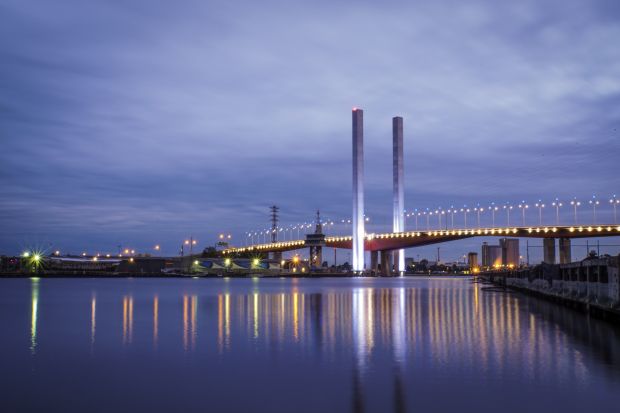Australia’s second biggest state is leaning on its universities to help rebuild an economy left shattered by one of the world’s longest Covid lockdowns.
The Victorian government has unveiled a A$2 billion (£1.1 billion) research and commercialisation fund as a centrepiece of its delayed state budget. The government hopes the “Breakthrough Victoria Fund” will accelerate growth in key industry sectors – including life sciences, agriculture, food, advanced manufacturing, clean energy and digital technologies – by securing extra investment from universities, industry and other government sources.
Victorian treasurer Tim Pallas said the fund would lure “the best and brightest” from around the globe. “We know Victoria has some of the best scientists and institutes in the world, producing some of the most advanced research,” he told parliament. “We’ll leverage this to supercharge growth in new innovations, new companies and new jobs.”
Victoria’s four-and-a-half month lockdown, largely lifted last month, has left a big hole in the state’s flailing economy. Gross state product was expected to decline by 4 per cent this fiscal year – after recording 3 per cent growth ahead of the pandemic – and the government has spent some A$13 billion on health and stimulus measures since March. It now faces a A$23 billion operating deficit this year after anticipating a A$618 million surplus just before the epidemic struck.
But the government says its “Australian first” fund will support thousands of jobs by fostering the adoption and commercialisation of home-grown research. Its allocations will support work under way in innovation hubs such as the Parkville biomedical precinct adjoining the University of Melbourne, Monash University’s main campus at Clayton, Melbourne’s proposed engineering campus at Fishermans Bend and La Trobe University’s headquarters at Bundoora.
Budget papers say a “long-term investment strategy” will outline the contributions expected from industry, philanthropy and the finance sectors as well as research institutions. But the papers commit the government to providing just 40 per cent of the fund’s operating capital. The government says the remaining A$1.2 billion will be delivered between 2024 and 2030, beyond the budget’s forward estimates, with the timing to be revealed after the investment plan has been finalised.
The state opposition criticised the government for glossing over the detail of its spending by abandoning its usual practice of producing a separate budget paper on its building programme. “In the year they spend A$69 billion in capital works, the government hides the detail – and the overruns,” tweeted shadow treasurer Louise Staley.
However, the budget papers confirm the government’s May promise of a A$350 million bailout package for the state’s universities and its April announcement of a A$45 million emergency relief fund for international students.
The state has also budgeted an additional A$33 million on policies and programmes to revive the state’s A$13.7 billion international education industry. They include a pilot scheme to fly in overseas students – a goal now looming as a possibility, with Melbourne’s airport expected to reopen to international flights from 7 December.
The budget also includes a A$210 million allocation for medical research. Most of this money will go towards the previously announced Australian Institutes for Infectious Diseases and Global Health in the Parkville biomedical precinct.
Register to continue
Why register?
- Registration is free and only takes a moment
- Once registered, you can read 3 articles a month
- Sign up for our newsletter
Subscribe
Or subscribe for unlimited access to:
- Unlimited access to news, views, insights & reviews
- Digital editions
- Digital access to THE’s university and college rankings analysis
Already registered or a current subscriber? Login








